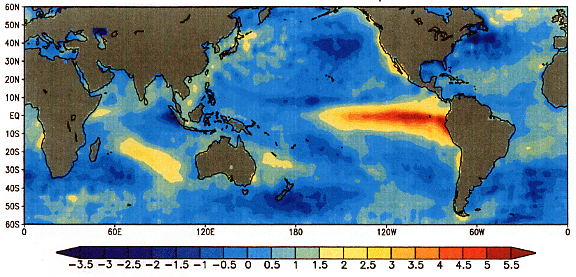El Niño

November 13, 2015
El Niño is a complex series of climatic changes affecting the equatorial Pacific region and beyond every few years, characterized by the appearance of unusually warm, nutrient-poor water off northern Peru and Ecuador, typically in late December. El Niño was first recognized in the 1600’s by fishermen in south america. They noticed that occasionally the Pacific waters were unusually warm.
El Niño causes a mild winter in Northern United States and a wet one in Southern United States, along with irregular temperatures. It also causes hurricanes and in general, irregular weather. El Niño also causes a variety of economic issues. El Niño years tend to be unfavorable for fishing, and there tends to be damaging floods along the coastal plain. Cold years are bad for farmers and their crops. The two primary crops of Peru (Rice and Cotton) are highly sensitive to timing and amounts of rainfall, along with many other crops grown in South America.
Because of the damage that El Niño causes, it is important to be able to predict which years are El Niño years. Developing countries located in the tropics which rely largely on farming and crops, are affected greatly by this. Climate Fluctuations can be harmful for these countries. This year’s El Niño has been recorded as one of the worst in history that we know of. El Niño is also partially the cause of Hurricane Patricia, which hit Mexico a few weeks ago at record breaking wind speeds.
There is also something called La Nina, in which sea surface temperatures go below average. In general, La Nina has the opposite effects of El Niño. During a La Niña year, winters are warmer in the southeast, and colder in the northwest.






